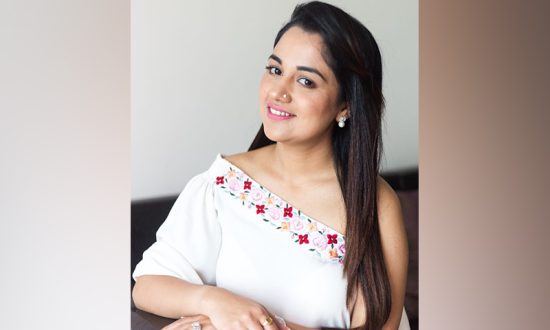Sakshi Khetterpal is a 34-year-old fashion designer who completed her B.A. Program from the renowned PEARL ACADEMY OF FASHION as a part of the batch of 2005-2009. On graduating from college, she chose to work with export houses to gain experience and learn the skill sets required to prosper in the Fashion Industry. Sakshi started her own label in 2012 with small scale operations. The journey post that was challenging but very humbling and she acknowledges that it put her on the path of a deep learning curve. Despite the challenges, she never thought of giving up. Her passion for the Fashion Industry continues to run high and she is more focused than ever towards creating a distinguished name in the same. Even though she knew that initially her operations would have to run on limited resources, her desire to create was so fierce that she tagged along one machine, one hand embroider and set off, willing to risk it and more importantly, filled to the brim with hopes, ideas, dreams and the will to work hard. From serving friends and family to being invited to display her collections at pop-ups and exhibitions, Sakshi is proud to share that she now works with a team of 15-18 people and all the risks she had set off with, seem to have been worth it!
Fashion is a state of mind.” – Sonia Rykiel
Different generations are allured by different aspects in the fashion industry. With millennials as the fastest coming generation at the moment, they impact the growth of the fashion industry in various ways from the material used, to how the brand needs to look and also to how brands can best cater to this generation. Let’s take a look at some of the ways that a designer market should be more likely to adopt when reaching out to their Millenial consumers.
Making a change
According to the State of Fashion report in 2019, millennials are more likely to view new brands as innovative or better than baby boomers. To make a designer curating clothing for this generation meant to use fashion to make a change in one’s environment and society. Majority of millennials are willing to pay more for brands that focus on sustainability. This particular generation focuses on change whether it is through movements, music, or fashion. Designers who are sustainable, eco-friendly, and green, therefore, are a huge hit for this generation.
Absence of labels/logos
Millennials don’t really look at fashion as a status symbol but as a mode of communication. Therefore, they don’t need a branded label but rather something which showcases quality fashion in a somber manner. To adapt to this, many brands such as Abercrombie and Fitch and Michael Kors have either removed their logos or reduced their sizes to not let brands overpower fashion choices.
Online presence
With most millennials currently in the working class, they do not have time to ‘go shopping’ and with everything coming online, they expect easy access and reliability for their fashion preferences as well. Therefore, no matter how big a brand you are and how green you go, If you do not have an online presence, millennials are likely to reject or overlook you due to the lack of accessibility.
Individuality
Millennials seek recognition and what better way to do that than with fashion. They use fashion and social media to publicize and therefore if a designer misses the mark for the ‘gram’, their designs will be hard to accept. This generation wants to stand out and look unique while being socially conscious. Therefore creating a designer brand that calls out to the emotions or eye of a millennial is of utmost importance.


